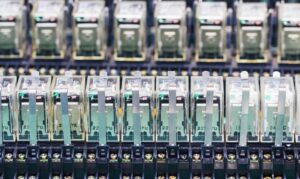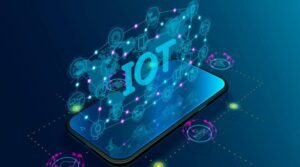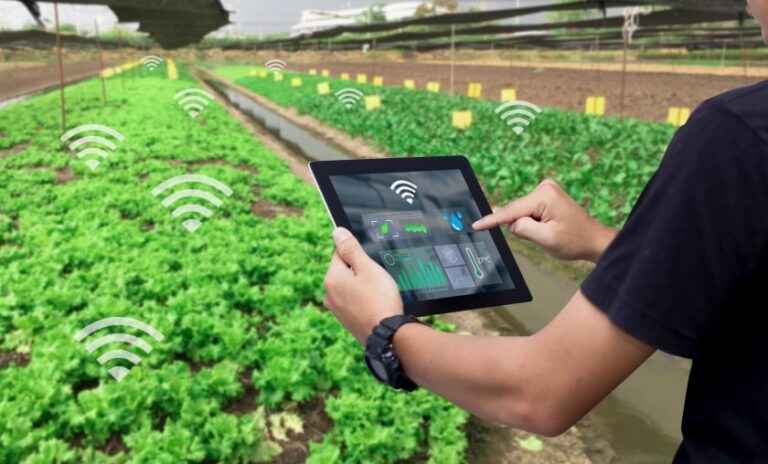The Role and Impact of Actuators in IoT
In the world of Internet of Things (IoT), actuators play a crucial role in transforming signals into physical actions. These devices are the workhorses of automated systems, enabling devices to perform actions like opening doors, adjusting valves, or even controlling machinery. This blog will explore what actuators are, their role in IoT systems, types of actuators, and real-world use cases, offering a complete guide to their significance in modern technology.
What is an Actuator in IoT?
In simple terms, an actuator is a device that converts electrical signals into physical movement. Actuators in IoT systems respond to the instructions provided by sensors and control systems. They can perform mechanical actions, such as moving or rotating parts, lifting objects, or adjusting physical settings. These actions could range from simple tasks like turning a switch to more complex operations like controlling a robotic arm.
What’s the Difference Between Sensors and Actuators in IoT?
While both sensors and actuators are integral to IoT systems, they serve different functions:
- Sensors collect data from the environment, such as temperature, humidity, or motion.
- Actuators, on the other hand, take action based on the sensor’s data, such as opening a valve when the temperature exceeds a certain limit or moving an arm in response to an environmental change.
Uncover the Role of Actuators in IoT

The Role of Actuators in the Architecture of IoT
Actuators are an essential part of the IoT architecture, acting as the physical element that interacts with the external world. These devices respond to commands or inputs from IoT systems and perform physical tasks, which are essential in industries like manufacturing, healthcare, smart homes, and more.
For example, in an automated smart home system, an actuator may open a window when sensors detect that the room temperature is too high, helping to maintain a comfortable environment.
How Are Actuators Used in IoT?
Actuators are used across numerous sectors for various purposes:
- Industrial automation: They are used to control machines, valves, and robotic arms.
- Healthcare: Medical devices like infusion pumps use actuators to dispense medication.
- Smart homes: Actuators control thermostats, windows, and security locks.
- Automotive: Actuators are involved in controlling vehicle systems, including airbags and automatic doors.
Real-Life Use Cases of Actuators in IoT
Domestic Applications of Electric Linear Actuators
Electric linear actuators play a vital role in making homes smarter. For example, they are used in adjustable beds that raise or lower based on user preferences. Similarly, these actuators can be used to automate home window opening, providing better airflow, or controlling solar panels for optimal sunlight exposure.
Industrial Applications of Actuators in IoT
In industries, actuators are crucial in streamlining processes. These devices control automated assembly lines, robotic arms, and machinery, increasing efficiency and reducing the risk of human error. They are used for tasks such as moving items between stages, controlling the flow of materials, or adjusting machinery settings remotely.
Domestic Applications with Industrial Devices: Electric Linear Actuators
Combining industrial-grade actuators in domestic settings enhances the efficiency and automation of everyday tasks. For instance, industrial actuators used in adjustable furniture or smart home systems offer precision and durability. While industrial actuators are often designed for heavier-duty applications, using them in domestic settings ensures that the devices perform reliably and efficiently over time.
Why Choose Industrial Devices for Your Linear Actuators in the Domestic Sector?
Choosing industrial-grade linear actuators for residential applications brings several advantages, including greater durability, longer lifespan, and better performance. These devices, typically designed for demanding industrial environments, provide higher reliability in home automation systems.
Linear Actuators for the Domestic Sector: Lift Systems for Accessibility
In the domestic sector, linear actuators are used in lift systems, such as stairlifts and elevators, which provide accessibility for people with mobility issues. These actuators help raise and lower individuals in their chairs, or entire platforms, offering independence and improving quality of life.
Advantages and Disadvantages of Actuators in IoT

Benefits of Using Actuators in IoT
Actuators offer numerous benefits, including:
- Increased automation: Actuators allow IoT systems to perform complex tasks automatically, reducing the need for manual labor.
- Improved efficiency: With precise control over movements and actions, actuators enhance the efficiency of machines and systems.
- Remote control: Actuators can be remotely controlled through IoT systems, offering greater flexibility and ease of use.
Potential Challenges and Limitations
Despite their advantages, actuators come with a few challenges:
- Maintenance: Actuators require regular maintenance, especially when used in heavy-duty environments, to ensure they function properly.
- Cost: High-quality actuators can be expensive, which may pose a challenge for budget-conscious projects.
List of IoT Sensors and IoT Actuators
In the realm of the Internet of Things (IoT), sensors and actuators work together to enable systems to not only gather information but also take actions based on that data. Understanding their roles is essential for building effective and intelligent IoT networks that can optimize automation, efficiency, and decision-making.
Overview of IoT Sensors
IoT sensors are devices that collect data from the environment or system and convert it into digital signals that can be analyzed and acted upon by other devices in the IoT network. Sensors are vital because they provide the data that drives decisions, alerts, and responses in IoT systems. Without sensors, an IoT system wouldn’t be able to gather the necessary data to react or adapt to its surroundings.
Common Types of IoT Sensors:
- Temperature Sensors: These sensors detect temperature changes and are commonly used in systems that monitor climate control, environmental conditions, and industrial processes. For example, smart thermostats rely on temperature sensors to regulate home heating and cooling systems.
- Motion Sensors: Motion sensors detect physical movement or changes in the environment. They are widely used in security systems, automatic lighting controls, and health monitoring. In smart homes, motion sensors can automatically turn on lights or adjust thermostat settings when they detect movement.
- Light Sensors: Light sensors are used to detect the intensity of light. They are commonly employed in outdoor security lighting, smart lighting systems, and for adjusting the brightness of screens or displays based on ambient light. For example, light sensors in smartphones automatically adjust screen brightness for better visibility.
- Humidity Sensors: These sensors monitor the level of moisture in the air and are essential for climate control, agricultural systems, and indoor environmental monitoring. In greenhouses, humidity sensors help maintain optimal conditions for plant growth.
- Proximity Sensors: Proximity sensors detect the presence or absence of an object within a specific range without physical contact. These sensors are used in industrial applications, robotics, and automated systems for quality control and object detection.
- Pressure Sensors: Pressure sensors measure the force applied to an object or the pressure within a system. These sensors are used in applications like tire pressure monitoring systems, industrial fluid management, and environmental monitoring.
Key Functions of IoT Sensors:
- Collecting real-time data
- Monitoring environmental conditions (temperature, humidity, pressure)
- Detecting movement, proximity, or presence
- Providing input for automated decision-making systems
Overview of IoT Actuators

While sensors collect data, actuators are responsible for turning that data into physical actions or outputs. When a sensor detects a change in the environment, it sends that data to a controller, which then triggers an actuator to perform a specific task. Actuators are essential for automating actions and closing the loop between data collection and real-world responses in IoT systems.
Common Types of IoT Actuators:
- Electric Actuators: These actuators use electric motors to generate mechanical movement. Electric actuators are versatile and widely used in applications that require precise, reliable motion control, such as robotics, HVAC systems, and automation in manufacturing. They are often used in smart home systems for controlling windows, doors, and adjustable furniture.
- Pneumatic Actuators: Pneumatic actuators operate by using compressed air to create motion. These actuators are commonly used in industrial applications where rapid movement is necessary, such as in packaging lines or for controlling valves. Pneumatic actuators are favored for their simplicity and speed.
- Hydraulic Actuators: Hydraulic actuators use fluid pressure to generate force. They are primarily used in heavy-duty applications that require substantial force, such as construction equipment, industrial machinery, and automated lifting systems. These actuators are robust and capable of handling large loads and high power demands.
- Linear Actuators: Linear actuators create straight-line motion, making them ideal for applications like lifting, pushing, or sliding. They are commonly used in systems like adjustable tables, hospital beds, and robotic arms. Linear actuators convert rotational motion into linear motion and can be electric, pneumatic, or hydraulic.
- Rotary Actuators: Rotary actuators produce rotational movement. These actuators are used in systems requiring continuous rotation, such as in robotics (for rotating joints or arms) or for adjusting solar panels to track the sun. Rotary actuators come in various types, including electric motors, hydraulic systems, and pneumatic drives.
Key Functions of IoT Actuators:
- Performing physical tasks based on sensor data
- Automating processes in industries, smart homes, and vehicles
- Controlling movements like opening/closing doors, adjusting valves, or rotating mechanisms
- Enhancing precision in robotics, production lines, and remote systems
Integration of Sensors and Actuators in IoT Systems
The true power of IoT systems lies in the seamless integration of sensors and actuators. Sensors capture data, which is then processed and used to trigger actuators to perform specific actions. This interaction between sensors and actuators enables automation in a wide range of applications, from smart homes to industrial environments.
For example, in a smart thermostat system:
- A temperature sensor detects when the temperature in a room rises above a set threshold.
- The sensor sends this data to a central controller.
- The controller then activates a cooling actuator (such as a fan or air conditioner) to bring the temperature back to the desired level.
Similarly, in industrial automation:
- A pressure sensor detects high pressure in a pipeline.
- The data is sent to a control system, which triggers a valve actuator to release the pressure and maintain safety.
Real-World Use Cases of Sensors and Actuators
- Smart Homes:
- Sensors: Motion sensors, temperature sensors, and light sensors monitor home conditions.
- Actuators: Smart thermostats, motorized blinds, and automated lighting systems respond to sensor inputs, enhancing comfort and energy efficiency.
- Healthcare:
- Sensors: Heart rate monitors, oxygen sensors, and temperature sensors track patient vitals.
- Actuators: Infusion pumps and medical robots use actuators to deliver medication or perform surgeries based on real-time data.
- Industrial Automation:
- Sensors: Temperature, pressure, and humidity sensors monitor factory conditions.
- Actuators: Pneumatic or electric actuators control machinery, conveyors, and robotic arms, improving efficiency and reducing human intervention.
- Agriculture:
- Sensors: Soil moisture sensors, temperature sensors, and weather monitoring sensors gather data for optimal farming conditions.
- Actuators: Irrigation systems, climate control systems, and automated harvesting machines use actuators to carry out tasks based on sensor inputs.
Why Industrial Devices for Domestic Applications of Electric Linear Actuators?
Advantages of Industrial Devices in Residential Settings
Industrial devices provide higher reliability, longer lifespan, and better performance compared to consumer-grade actuators. They ensure that automation systems in homes, like smart furniture and lifts, work seamlessly and last longer.
Cost vs. Benefit Analysis
Though industrial devices come with a higher initial cost, their durability and performance make them a worthwhile investment for the long term. The reduced maintenance needs and extended lifespan provide excellent value over time.
Final Thoughts
Actuators play an essential role in the IoT ecosystem, from domestic applications to industrial systems. By understanding the different types of actuators and their practical uses, businesses and homeowners can make informed decisions about how to implement IoT automation for greater efficiency and ease of operation.
Frequently Asked Questions (FAQs)
- What are the most common types of actuators used in IoT?
- Electric, pneumatic, and hydraulic actuators are the most common types.
- What’s the main difference between sensors and actuators in IoT?
- Sensors collect data, while actuators perform actions based on that data.
- Are industrial actuators suitable for domestic use?
- Yes, they offer enhanced reliability and performance in residential settings.
- How do actuators contribute to smart homes?
- Actuators control devices like windows, doors, and lifts, automating various functions in smart homes.
- What are the benefits of using electric actuators?
- Electric actuators are energy-efficient, precise, and widely used in both domestic and industrial applications.





